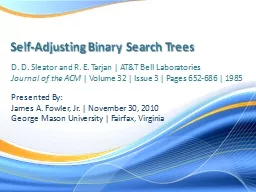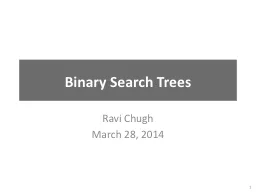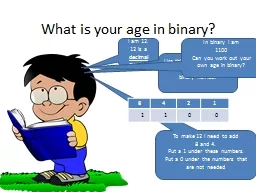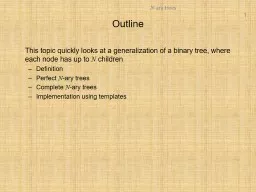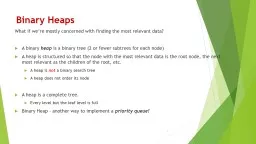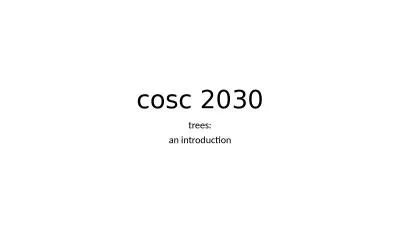PPT-Outline Introducing complete binary trees
Author : tatyana-admore | Published Date : 2019-06-30
Background Definitions Examples Logarithmic height Array storage Background A perfect binary tree has ideal properties but restricted in the number of nodes n
Presentation Embed Code
Download Presentation
Download Presentation The PPT/PDF document "Outline Introducing complete binary tre..." is the property of its rightful owner. Permission is granted to download and print the materials on this website for personal, non-commercial use only, and to display it on your personal computer provided you do not modify the materials and that you retain all copyright notices contained in the materials. By downloading content from our website, you accept the terms of this agreement.
Outline Introducing complete binary trees: Transcript
Download Rules Of Document
"Outline Introducing complete binary trees"The content belongs to its owner. You may download and print it for personal use, without modification, and keep all copyright notices. By downloading, you agree to these terms.
Related Documents



